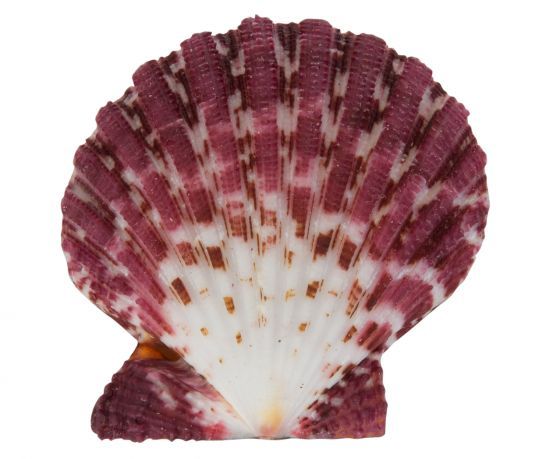We use cookies to make your experience better.
Pecten Phallium from the Phillipines
Pecten albicans, common name Japanese baking scallop, is a species of marine bivalve mollusks in the family Pectinidae, the scallops. Pecten albicans has a shell reaching a size of 95 mm, with about 12 radiating ribs. The color of the surface usually ranges from light brown to dark brown, but it may be also orange or purple. The lower valve of this species is less convex than in Pecten excavatus. This species is of commercial value for fishing in Japan.
The shell (or snails also known as "snail") is one of limestone (calcite and / or aragonite) and other minerals existing (mostly) external skeleton, which is produced by a mollusc (tribe of Mollusca). The shell gives the animal strength and protects the animal against external influences such as predation, injuries, dehydration, etc. The shell grows during the life of the mollusk. The science that studies all aspects of mollusks, called malacology. A branch of malacology which itself only with the shell is called conchology. Previously it was considered wrong to conclude that malacology was not involved with the shell and the distinction between malacology and conchology was laid by some very sharp. In current practice, the terms are often interchangeably, and they are more or less considered as synonyms. Caps may be used to hardening of a passageway, which is then sometimes called a "shell path" is mentioned. Also, shells can be burned to lime shell, which is often used as a building material in the past, was used instead of cement.
Shells from Cebu
| Dimensions | 40 - 45mm |
|---|












